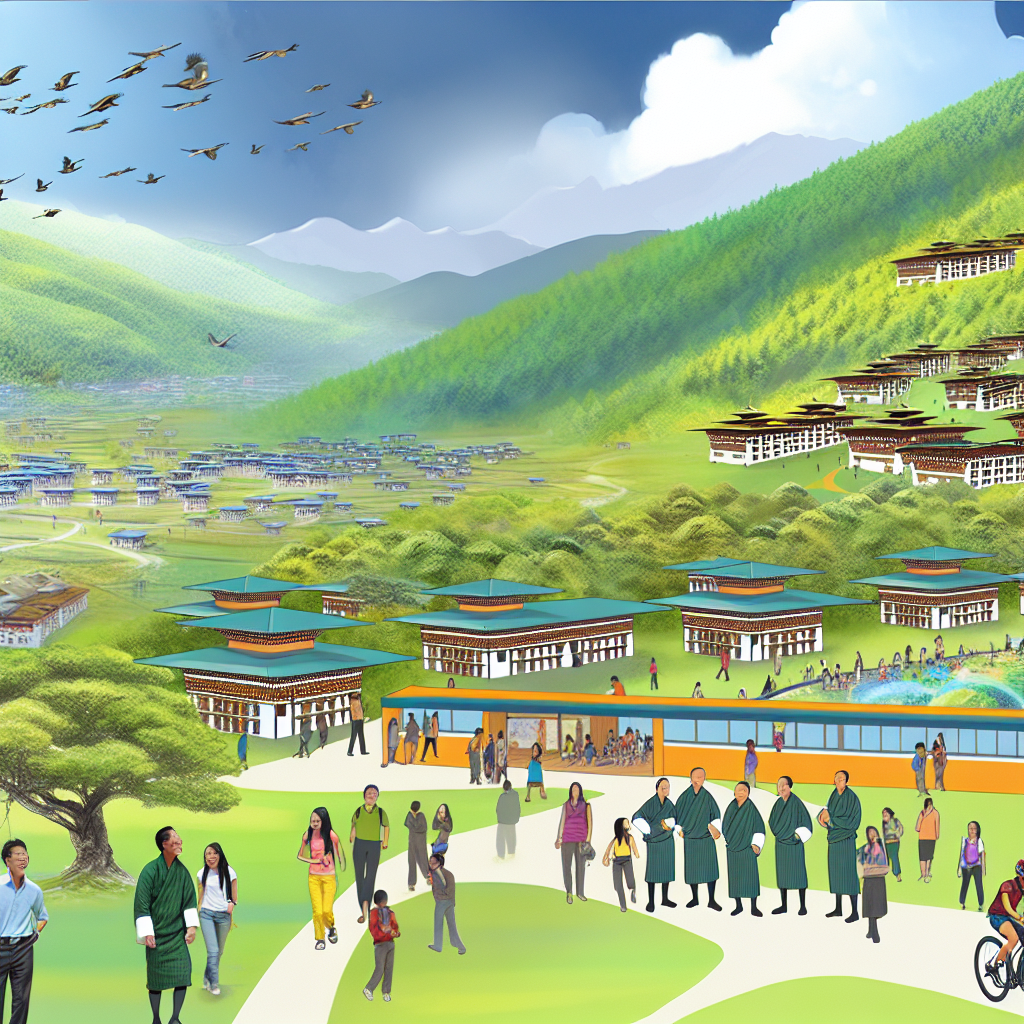Bhutan’s High-Value, Low-Impact Tourism Model Draws Interest from Other Asian Nations
Bhutan, a small Himalayan kingdom known for its breathtaking landscapes and rich cultural heritage, has long been a pioneer in sustainable tourism. Its unique approach, often described as “high-value, low-impact” tourism, has garnered global attention for balancing economic growth with environmental preservation and cultural integrity. As many Asian countries grapple with the challenges of mass tourism, Bhutan’s model offers valuable lessons and inspiration.
Understanding Bhutan’s Tourism Philosophy
Bhutan’s tourism strategy is rooted in the concept of Gross National Happiness (GNH), which prioritizes well-being over mere economic gains. Since opening its borders to international tourists in the 1970s, Bhutan has deliberately avoided mass tourism to protect its fragile environment and cultural identity.
The cornerstone of Bhutan’s tourism policy is the “High-Value, Low-Impact” approach, which involves:
- Minimum Daily Tariff: Tourists are required to pay a minimum daily fee (currently around $200-$250 per day), which covers accommodation, meals, transport, and a licensed guide.
- Controlled Visitor Numbers: The government regulates the number of tourists allowed each year to prevent overcrowding and environmental degradation.
- Focus on Quality Experiences: Emphasis is placed on cultural immersion, trekking, and eco-tourism rather than mass-market attractions.
Impact and Success of the Model
Bhutan’s approach has yielded impressive results. According to the Tourism Council of Bhutan, the country welcomed approximately 315,000 tourists in 2019, a manageable number given its population of around 750,000. Despite the relatively low volume, tourism contributes significantly to the national economy, accounting for nearly 7% of GDP.
Environmental conservation has been a key beneficiary of this model. Bhutan remains one of the few carbon-negative countries globally, with over 70% of its land under forest cover. The tourism policy supports this by minimizing ecological footprints and promoting responsible travel.
Culturally, the model has helped preserve Bhutan’s unique traditions and heritage. Tourists engage with local communities through guided tours, festivals, and homestays, fostering mutual respect and understanding.
Lessons for Other Asian Nations
As countries like Thailand, Indonesia, and Vietnam face the adverse effects of overtourism—such as environmental degradation, cultural erosion, and strained infrastructure—Bhutan’s model offers a compelling alternative. Several Asian nations have begun exploring adaptations of the high-value, low-impact framework:
- Thailand: The government has initiated pilot programs in ecologically sensitive areas like Koh Phi Phi and Maya Bay, introducing visitor caps and higher fees to reduce environmental stress.
- Indonesia: Bali has implemented a “tourist tax” and restricted new hotel developments to manage tourist numbers and fund conservation efforts.
- Vietnam: Efforts are underway to promote community-based tourism in regions like Sapa, encouraging longer stays and deeper cultural engagement rather than mass day-trips.
Case Study: Bhutan’s Controlled Trekking Routes
One of the most illustrative examples of Bhutan’s model in action is its controlled trekking routes, such as the famous Snowman Trek. This challenging trek is limited to a small number of permits annually, ensuring minimal environmental impact and a high-quality experience for trekkers.
Permits are issued through licensed tour operators who adhere to strict environmental guidelines, including waste management and respect for local customs. This system not only protects the fragile alpine ecosystem but also provides sustainable income for remote communities.
Challenges and Future Outlook
While Bhutan’s model is widely praised, it is not without challenges. The high daily tariff can be prohibitive for some travelers, potentially limiting diversity in visitor demographics. Additionally, the COVID-19 pandemic severely impacted Bhutan’s tourism revenue, highlighting the risks of over-reliance on a single sector.
Nevertheless, Bhutan continues to innovate by integrating digital technologies for virtual tourism and enhancing domestic tourism to build resilience. Its commitment to sustainability remains unwavering, serving as a beacon for responsible tourism development worldwide.
Conclusion
Bhutan’s high-value, low-impact tourism model exemplifies how a country can harness tourism as a force for good—balancing economic benefits with environmental stewardship and cultural preservation. By regulating visitor numbers, imposing minimum tariffs, and focusing on quality experiences, Bhutan has created a sustainable tourism framework that other Asian nations are keen to emulate.
As the region faces mounting pressures from mass tourism, Bhutan’s approach offers a roadmap for sustainable growth that respects both people and planet. Embracing these principles could help Asian countries protect their natural and cultural treasures while fostering meaningful and responsible travel experiences for generations to come.





